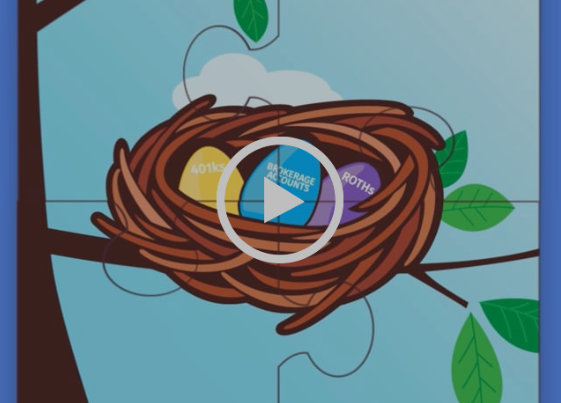Educating children on various concepts surrounding the value of money can be very beneficial to both you and your child. While that may seem obvious, statistics show that that most children are not financially aware, primarily due to the lack of financial education in pre-university schooling. That can create a slew of headaches down the line, including poor spending habits, bad credit and sustained struggles with debt.
Per a CNBC report, less than 25% of high school students take a personal finance course before college, which can create poor money management habits that stick.
Additionally, a Student Loan Hero survey of over 1,000 undergraduate college students found that 73% of high school students are concerned about paying back student loans, and the overwhelming majority do not know what their monthly payment will end up being.
Those struggles tend to remain in adulthood, as more than half of all Americans lack a savings account of at least $400 dollars to cover an emergency.
With an absence of proper financial education in pre-university schooling, financial stressors are already rearing their ugly head. To avoid these concerns, parents can choose to educate their children at home, teaching them by example about the value of money and financial responsibility. Here are a couple of strategies you can use to instill good values and financial practices as your child grows up.
Start them Early! Have Your Child Help You at the Grocery Store
When it comes to developing money habits, the earlier you learn the better. A great place to start with young children is the grocery store! Show your kids the price of certain grocery items and compare them other options around the store. For example, one banana only costs .65 cents, while a pound of beef is $10.00. You can use this discrepancy to show them how different items have different values, and the importance of budgeting when buying groceries.
Having your child join you at the cash register can help them visualize the exchange of money for goods. Be sure to use cash, however, as physical bills are the easiest to illustrate the value of money. The experience can be a valuable learning opportunity for your child, during a routine occurrence for you.
Use an Allowance to Teach the Importance of Saving vs Spending
An extremely effective way to teach children about money is through the use of an allowance. Offering a reward for completed chores around the house can not only incentivize good behavior, but also teach kids that money is typically earned through work. Of course, there are some chores the kids should help out with without expecting any financial reward, as a part of being a family. Yet, offering up additional tasks for monetary incentive is a great way to demonstrate how to earn money.
While the concept of an allowance is nothing new, there are some different ways to shape the agreement into becoming a more educational endeavor.
Use a piggy bank or a jar to develop some good saving habits. They can spend some of what they make, but ensure that some of the allowance goes into the savings jar. That way, over time, that can see what value of saving can do and save up for a bigger purchase!
Not only that, but you can also choose to match some of your child’s savings to boost the incentive to put away even more! Say, for example, you will match a quarter of every dollar that your child saves. This will incentivize them to save more, using a system that is quite similar to an employer match for a 401k retirement plan.
It’s also important to explain to them what money can buy. For example, one week’s allowance can buy you a movie ticket, while a month’s allowance can buy you a new video game. Explaining it in these terms can drive more interest in saving and teach kids to be more financially aware of their decisions.
The Opportunities and Consequences of Credit
As kids get into high school and start to think about getting their driver’s license, this is a great time to teach them about credit, as credit can come into play if a teen is preparing to purchase their first car. By the parent acting as the bank, valuable lessons can be taught about the concept of borrowing money before they are able to do so in the real world.
This can be done with a younger age group as well. Let’s say your child wants a new pair of basketball shoes, but needs to borrow $100 dollars to purchase them. Lend them the $100 dollars, however, specify to them that they must pay it back over the next two months on a weekly basis. If they succeed in paying you back, you can let them know next time they need to borrow money, they can take out a little bit more as they proved they are a dependable borrower!
This can also be used to explain the risk surrounding borrowing. If your child fails to pay it back, you can explain that they now owe you interest on the money that they haven’t paid back! Instead of waiting until adulthood to learn this lesson, which has real world consequences and creates lasting financial headaches, teaching them while they’re young can develop good spending habits that stick.
Investing – The Opportunity to Earn while Saving
Investing should be the next topic on the docket as your children prepare for college. Yet, this lesson can be taught at an earlier age as well, with the use of a custodial Uniform Transfer to Minors Account (UTMA). This allows you to fund an investment account on behalf of a minor, funded by gifts or allowance payments earning a rate of return over time.
Additionally, as teens age and start working summer jobs, they can put some of that money away into what’s called a Roth IRA for a Minor. These accounts allow earnings to grow tax-free, illustrating the value of compounding interest and opportunity for growth over extended periods of time by saving instead of spending. Yet, they can only be funded with earned income, not from any allowance payments.
All in all, the suggestions here are completely up to the discretion of the parent. They can be adjusted to whatever fits your current situation best. However, teaching your kids these financial lessons as they grow up an instill great financial habits that stick in adulthood while simultaneously avoiding potential economic stressors.



